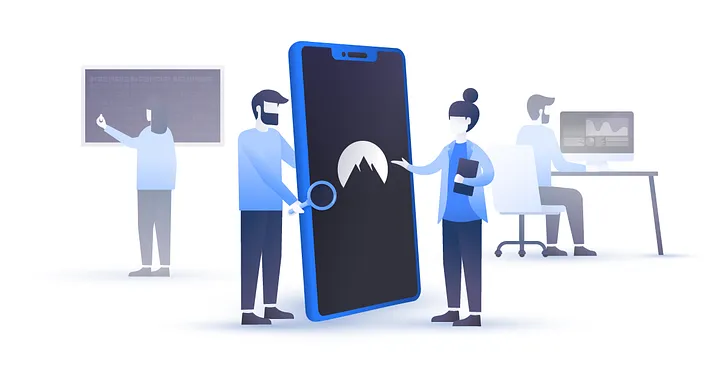The proliferation of Internet of Things (IoT) devices introduces both convenience and vulnerability. Cybercriminals are always looking for new ways to exploit these devices, which often lack the robust security features found in traditional computing systems. Given this reality, I have taken significant measures to secure my IoT devices, one of which involves the use of Virtual Private Networks (VPNs). Below, I share my insights on how I use VPNs to bolster the security of my IoT ecosystem.
✅ Current deal: 🔥 Get NordVPN with up to 75% OFF! 🔥

Understanding the Risks of IoT Devices
IoT devices can range from smart light bulbs to home security cameras. While these devices offer unparalleled convenience, they also pose unique security challenges. Many of these gadgets are inadequately secured, making them prime targets for hackers. They often collect personal data and can even be turned into entry points for broader network breaches. I have seen first-hand how a single compromised device can jeopardize the entire home network.
Why Use a VPN for IoT Security?
VPNs work by creating a secure and encrypted connection between my devices and the internet. This ensures that any data transmitted between my IoT devices and external servers is encrypted, making it much harder for hackers to intercept sensitive information. By employing a VPN, I create an additional layer of security around my devices, making unauthorized access significantly more challenging.
Key Benefits of Using a VPN with IoT Devices
-
Data Encryption: All data traveling between my devices and the internet is encrypted. This means that even if a hacker manages to intercept the data, they will not be able to read it easily.
-
IP Address Masking: A VPN masks my IP address, making it difficult for hackers to track my online activities or pinpoint my location.
-
Secure Remote Access: I can access my IoT devices securely from anywhere, without exposing them directly to the internet.
-
Protection Against DDoS Attacks: A VPN can help mitigate Distributed Denial of Service (DDoS) attacks on my IoT devices by obscuring their IP addresses.
-
Secure Public Wi-Fi Usage: If I ever need to connect to public Wi-Fi, my VPN ensures that my IoT devices remain protected from potential threats on unsecured networks.
-
Bypassing Geo-Restrictions: Some devices may have geographic restrictions on content or services. A VPN allows me to bypass these restrictions for a more robust user experience.
My Approach to Implementing VPNs for IoT Devices
Strategically implementing a VPN can significantly reduce vulnerabilities in my IoT setup. Here’s how I go about it:
Choosing the Right VPN Service
After extensive research, I chose a reputable VPN service with a proven track record in cybersecurity. It’s essential to select a provider that prioritizes privacy, has no logs, and offers strong encryption protocols. I also made sure the service has a user-friendly interface and compatibility with various IoT devices.
Configuring the VPN on My Router
I opted to configure the VPN directly on my router instead of treating each IoT device individually. This step centralizes security and ensures that all devices connected to my network benefit from the VPN. By following the VPN provider’s guidelines, I was able to set up an encrypted tunnel for my entire network efficiently.
Segmenting My Network
To bolster security further, I created separate network segments for my IoT devices. This means my personal devices, like laptops and smartphones, operate on a different segment than my smart devices. This strategy adds another layer of isolation, minimizing the chances of a breach spreading across my network.
Regularly Updating IoT Device Firmware
Keeping my IoT devices up to date is crucial for maintaining security. I regularly check for firmware updates and ensure that I install them promptly. Many manufacturers release patches that address vulnerabilities and enhance security, and neglecting these updates can leave my devices exposed.
Monitoring Traffic and Device Behavior
I actively monitor the traffic and behavior of my IoT devices. Using tools available through my VPN provider, I can track any unusual activity or spikes in data transmission. If I notice anything suspicious, I take immediate action, whether that be blocking certain traffic or even removing the compromised device from my network.
Educating Myself and Family Members
I believe that knowledge is the best defense against cyber threats. Therefore, I take the time to educate myself and my family about safe practices while using IoT devices. This includes discussing the importance of unique passwords, recognizing phishing attempts, and understanding basic privacy settings.
✅ Current deal: 🔥 Get NordVPN with up to 75% OFF! 🔥
Tips for Securing Your IoT Devices with a VPN
To ensure effective protection for your IoT devices, consider the following tips:
-
Use a Reputable VPN Service: Research and select a VPN with high encryption standards and a good reputation.
-
Enable Multi-Factor Authentication: Activate multi-factor authentication on accounts linked to your IoT devices for an additional security layer.
-
Change Default Passwords: Always change default usernames and passwords on IoT devices to enhance security.
-
Regularly Audit Device Permissions: Periodically check and restrict permissions for apps and services connected to your IoT devices.
-
Disable Unused Features: Turn off any features or services on your IoT devices that you do not use, as these can create potential vulnerabilities.
-
Network Segmentation: Organize your home network by separating your IoT devices from more critical devices to limit exposure.
Conclusion
Using a VPN to shield IoT devices from hackers has proven to be an effective strategy in my cybersecurity toolkit. Through careful selection of services, strategic configuration, and regular maintenance, I have built a robust defense against the myriad of threats that target these devices. By sharing my approach, I hope to empower others to take similar measures in protecting their interconnected worlds. Cybersecurity is not just a single action but an ongoing commitment to vigilance and resilience.
Affiliate Disclosure: By clicking on our links, we may earn commissions at no additional cost to you.